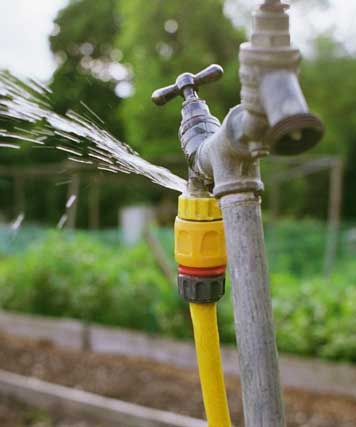Just how to Examine If Your House Has a Concealed Leak
Just how to Examine If Your House Has a Concealed Leak
Blog Article
What're your concepts on Top leak detection hacks?

The minute you locate a leakage, calling your plumber for fixings is the most effective option. Nonetheless, some little water leakages might not show up. Right here are some hacks that help if you can not detect it with your naked eyes.
Early detection of leaking water lines can mitigate a possible calamity. Besides saving you money, it will certainly decrease the stress as well as stress.
Inspect Water Consumption
If you identify sudden modifications, despite your consumption being the exact same, it suggests that you have leaks in your plumbing system. A sudden spike in your bill shows a fast-moving leak.
A stable rise every month, even with the exact same habits, reveals you have a slow leakage that's additionally slowly rising. Call a plumber to extensively check your residential or commercial property, specifically if you feel a warm location on your flooring with piping underneath.
Evaluate and Examine the Scenario
Home owners must make it a habit to examine under the sink counters as well as even inside closets for any bad odor or mold and mildew growth. These 2 red flags show a leakage so prompt interest is required. Doing routine examinations, even bi-annually, can conserve you from a major trouble.
Analyze the Water Meter
Every house has a water meter. Inspecting it is a surefire way that aids you find leakages. For starters, shut off all the water resources. Guarantee nobody will certainly flush, make use of the faucet, shower, run the washing device or dish washer. From there, go to the meter and also watch if it will transform. Considering that no one is using it, there need to be no movements. That suggests a fast-moving leakage if it moves. Similarly, if you detect no changes, wait an hour or 2 and also check back once again. This means you may have a sluggish leakage that can even be underground.
Asses Outside Lines
Don't neglect to examine your exterior water lines as well. Ought to water seep out of the connection, you have a loosened rubber gasket. One small leak can waste loads of water and also surge your water expense.
Do a Food Coloring Test
30% comes from toilets when it comes to water consumption. Examination to see if they are running appropriately. Drop flecks of food shade in the tank and wait 10 mins. If the color in some way infiltrates your bowl during that time without flushing, there's a leak between the tank as well as bowl.
Check for discolorations as well as weakening as many pipelines as well as devices have a life span. If you believe leaking water lines in your plumbing system, don't wait for it to intensify.
The moment you discover a leakage, calling your plumber for fixings is the best service. Some small water leakages might not be visible. Inspecting it is a proven means that helps you discover leaks. One tiny leak can squander heaps of water and also increase your water costs.
If you suspect leaking water lines in your plumbing system, don't wait for it to escalate.
WARNING SIGNS OF WATER LEAKAGE BEHIND THE WALL
PERSISTENT MUSTY ODORS
As water slowly drips from a leaky pipe inside the wall, flooring and sheetrock stay damp and develop an odor similar to wet cardboard. It generates a musty smell that can help you find hidden leaks.
MOLD IN UNUSUAL AREAS
Mold usually grows in wet areas like kitchens, baths and laundry rooms. If you spot the stuff on walls or baseboards in other rooms of the house, it’s a good indicator of undetected water leaks.
STAINS THAT GROW
When mold thrives around a leaky pipe, it sometimes takes hold on the inside surface of the affected wall. A growing stain on otherwise clean sheetrock is often your sign of a hidden plumbing problem.
PEELING OR BUBBLING WALLPAPER / PAINT
This clue is easy to miss in rooms that don’t get much use. When you see wallpaper separating along seams or paint bubbling or flaking off the wall, blame sheetrock that stays wet because of an undetected leak.
BUCKLED CEILINGS AND STAINED FLOORS
If ceilings or floors in bathrooms, kitchens or laundry areas develop structural problems, don’t rule out constant damp inside the walls. Wet sheetrock can affect adjacent framing, flooring and ceilings.
https://www.servicemasterbyzaba.com/blog/how-to-detect-water-leakage-in-walls/

I ran across that post about Finding hidden leaks while doing a search on the internet. Enjoyed reading our blog entry? Please share it. Help other people find it. Thank you so much for taking the time to read it.
Report this page